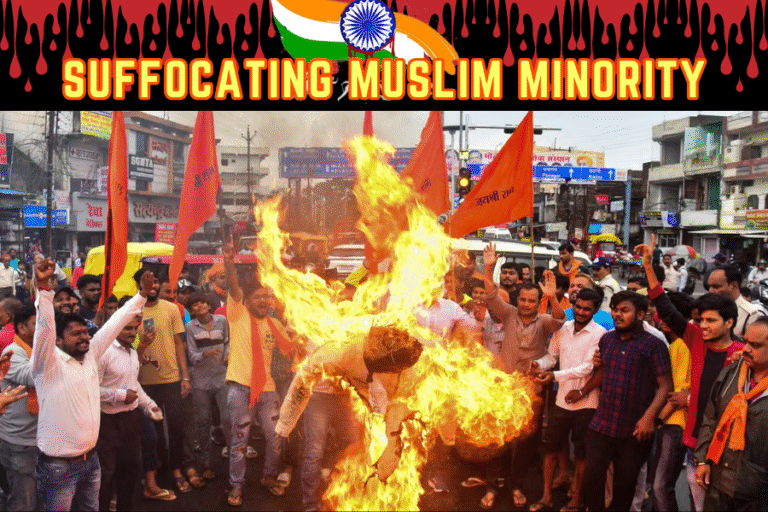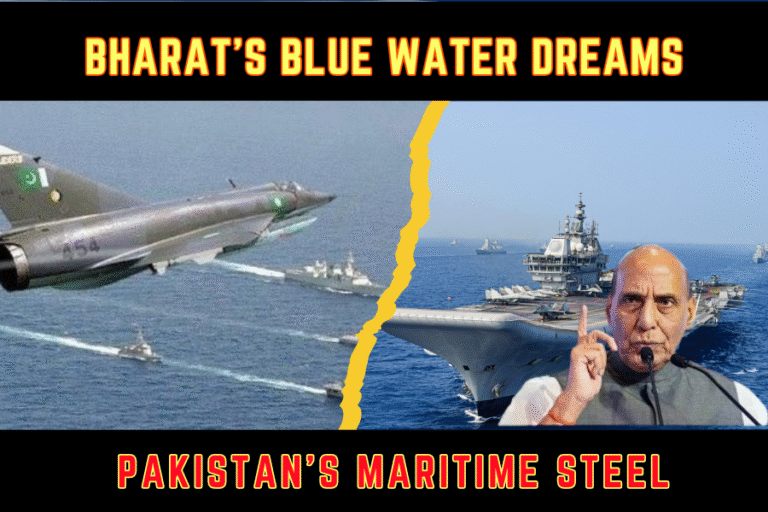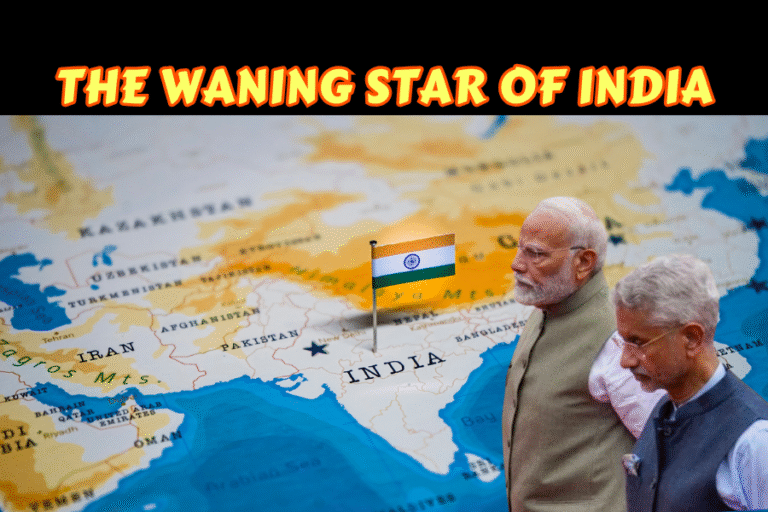(By Khalid Masood)
From the bustling streets of Islamabad to the war-torn valleys of Kashmir, one name evokes a storm of controversy: Narendra Modi. As India’s Prime Minister, Modi has cast a long shadow over South Asia, his policies and rhetoric fueling tensions with Pakistan and minorities within India. To many Pakistanis, Modi is not the visionary leader his supporters claim but a ruthless, power-hungry figure whose rise from humble origins to global prominence masks a trail of division, violence, and warmongering. This article exposes Modi’s journey—from his roots as an illiterate tea vendor to his role in the 2025 Pahalgam attack—and argues that his leadership threatens regional stability, demanding urgent action for peace.
A Questionable Beginnings: From Tea Stall to RSS Cadre
Narendra Modi’s origin-story is often spun as a rags-to-riches tale. Born in 1950 in Gujarat, he reportedly worked at his father’s tea stall as a young boy, a narrative the Bharatiya Janata Party (BJP) amplifies to portray him as a man of the people (CNN, 2024). In Pakistan, however, whispers persist that Modi’s education was minimal, with some claiming he was functionally illiterate, relying on charisma over intellect as his early life remains opaque, fueling skepticism about his credentials.
More troubling is Modi’s early allegiance to the Rashtriya Swayamsevak Sangh (RSS), a Hindu nationalist organization he joined as a teenager on 1971. The RSS, banned multiple times in India for its role in communal violence, is viewed by most of the world as a terrorist entity, accused of orchestrating attacks on Muslims, Christians, Dalits, Buddhists, and Jains (Al Jazeera, 2025). . In 1985, he was assigned to the Bhartiya Janata Party (BJP), marking the start of his formal political career.
Critics allege Modi abandoned his wife, Jashodaben, to meet RSS requirements for its pracharaks (full-time workers), who must remain celibate or unattached. Though Modi acknowledged his marriage in 2014, Jashodaben’s marginalization remains a point of contention, symbolizing his prioritization of ideology over personal ties (The Washington Times, 2024).
Gujarat’s Dark Chapter: Allegations of Complicity
Modi’s tenure as Gujarat’s Chief Minister (2001–2014) is a lightning rod for accusations. In 2002, riots erupted after a train carrying Hindu pilgrims was set ablaze in Godhra, killing 59. What followed was a wave of violence, with over 1,000 people—mostly Muslims—killed, including Congress MLA Ehsan Jafri, a vocal advocate for Hindu-Muslim unity (Los Angeles Times, 2024). Pakistanis and human rights groups, including Amnesty International, allege Modi’s government orchestrated or enabled the killings, citing his delayed response and inflammatory rhetoric. Indian courts cleared Modi in 2012, but suspicions linger, with Pakistan’s media, like Dawn, framing the riots as a genocide orchestrated by a complicit state (2025).
The Gujarat riots’ fallout was global. The United States and several Western nations imposed travel bans on Modi, citing his role in the violence. These bans, lifted only after his 2014 election as PM, remain a stain on his record, reinforcing Pakistan’s view of Modi as a pariah-turned-powerbroker (CNN, 2024).
Prime Minister Modi: Fanning Flames of Hate
Since becoming Prime Minister in 2014, Modi’s policies and speeches have deepened India’s communal divide, particularly targeting Muslims. In 2024, he called Muslims “infiltrators” and “those with more children” during an election rally, prompting accusations of hate speech from the Congress party (Washington Times, 2024; Los Angeles Times, 2024). Pakistan’s Foreign Ministry condemned these remarks, viewing them as part of Modi’s broader anti-Muslim agenda, which includes the Citizenship Amendment Act (CAA), criticized for excluding Muslims. BJP-ruled states have also passed laws against “love jihad,” a baseless conspiracy alleging Muslim men convert Hindu women through marriage, further stoking Islamophobia (Washington Times, 2024).
Modi’s rhetoric often extends to Pakistan and Bangladesh, with frequent accusations of terrorism and infiltration. In Pakistan, this is seen as a deliberate strategy to demonize neighbors for domestic political gain, especially during elections (Dawn, 2025). The 2007 Samjhauta Express bombing, which killed 68, mostly Pakistanis, is a sore point. Though initial investigations pointed to Hindu extremists, no convictions followed, leading many in Pakistan to allege Modi’s government shielded the perpetrators as PM (The Hindu, 2018). While evidence linking Modi directly is absent, the lack of justice fuels distrust.
False Flags and Military Aggression: 2019 and 2025
Modi’s foreign policy, particularly toward Pakistan, is viewed in Islamabad as belligerent. In 2019, following the Pulwama attack, India launched airstrikes in Balakot, Pakistan, claiming to target Jaish-e-Mohammed (JeM) camps. Pakistan retaliated with Operation Swift Retort, downing two IAF jets, including a MiG-21 piloted by Wing Commander Abhinandan Varthaman, who was captured and later released (Dawn, 2019). Pakistan argues the Pulwama attack was a false flag operation timed with a U.S. dignitary’s visit to India, a pattern they claim repeats (The Express Tribune, 2019). The BJP government under Prime Minister Atal Bihari Vajpayee in 2000 also did the same trick by killing 35 Sikhs in Chittisinghpura, Kashmir, during U.S. President Bill Clinton’s visit to India. Indians immediately implicated Pakistan in the massacre but Clinton did not fall into the Indian trap and visited Pakistan after that.
The 2025 Pahalgam attack, which claimed the lives of 26 tourists, became yet another dangerous flashpoint in South Asia. The Resistance Front (TRF), dubiously linked to Lashkar-e-Taiba (LeT), claimed responsibility; however, Pakistan firmly denied any involvement. Pakistan’s Defence Minister, Khawaja Asif, suggested it was either a homegrown act or a meticulously staged false flag operation orchestrated by India itself (Wikipedia, 2025). In response, India launched Operation Sindoor, targeting alleged terrorist bases within Pakistan and Pakistan-administered Kashmir. Prime Minister Modi vowed to “punish every terrorist” (The Times of India, 2025), yet in Pakistan—and increasingly in the eyes of the international community—his hasty accusations and aggressive military actions were viewed as political theatrics designed to distract from growing domestic crises. The world, including the United States and the United Nations, questioned India’s narrative and demanded credible evidence before accepting any claims (Al Jazeera, 2025). In the end, India found itself diplomatically isolated—standing alone, as no one was willing to buy its baseless attempt to pin blame on Pakistan this time.
Pahalgam and Power: A Desperate Ploy?
At 74, Modi faces the BJP’s unwritten rule barring leaders over 75 from contesting elections, potentially ending his premiership (Reuters, 2024). In Pakistan, some speculate Modi orchestrated the Pahalgam attack to justify military action, bolster his “strongman” image, and extend his political relevance (Dawn, 2025). His fiery speeches in Bihar’s election rallies, vowing to chase terrorists “to the ends of the earth,” are dismissed as warmongering to sway voters (Al Jazeera, 2025). The attack appears to be a political ploy aimed at consolidating BJP support amid the Bihar elections—further fueling Pakistani suspicions that it may have been a staged crisis.
Modi’s frustration is palpable. The global response to Pahalgam, with calls for de-escalation from the U.S., China, and Russia, has isolated India diplomatically (*The Times of India, 2025). His war cries are seen as the desperate acts of a leader clinging to power.
A Threat to Peace and Stability
Modi’s legacy is one of ruthless ambition and division. His RSS roots, alleged complicity in Gujarat, and hate-driven rhetoric have alienated Muslims, with hundreds reportedly detained and tortured under draconian laws like the UAPA (The Guardian, 2025). His military adventurism, from 2019 to 2025, risks nuclear escalation, while unproven false flag claims about Kashmir attacks, including Pahalgam, deepen mistrust (The Australian, 2025).).
Yet, Modi’s India, with its economic might, and global alliances, remains formidable. For peace to prevail, India must move beyond Modi’s polarizing leadership and his RSS-backed cronies. The region cannot afford a warmonger whose hunger for power threatens South Asia’s fragile equilibrium.
_____________________________________
Sources: Al Jazeera, The Hindu, Dawn, The Express Tribune, CNN, The Washington Times, Los Angeles Times, The Times of India, Reuters, The Guardian, Wikipedia, Aviation Week.







